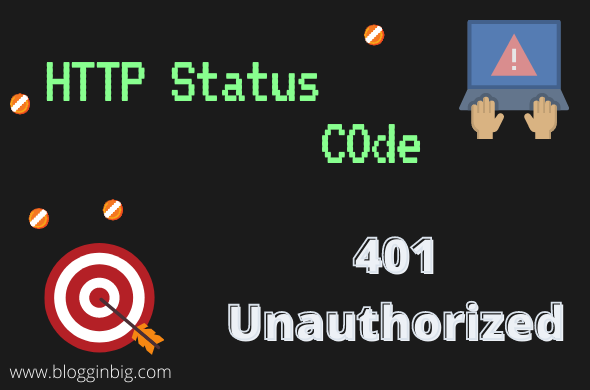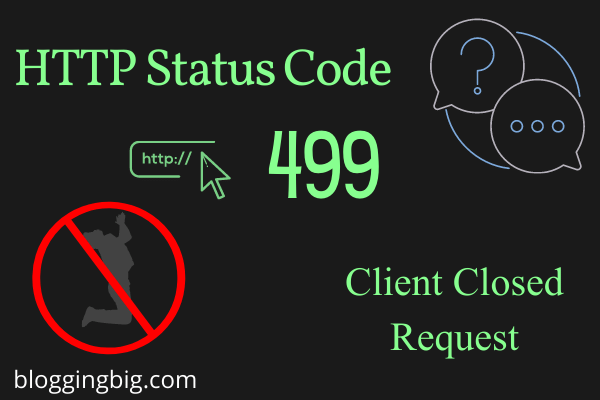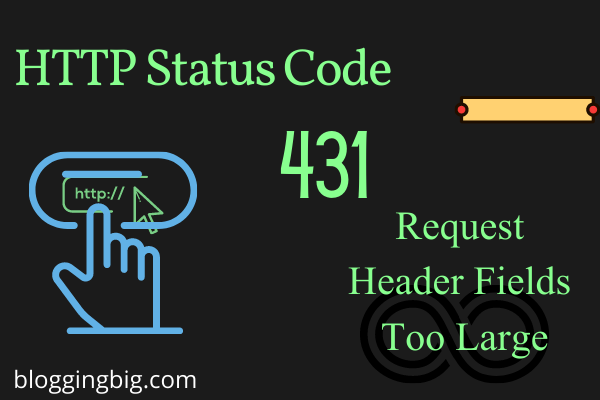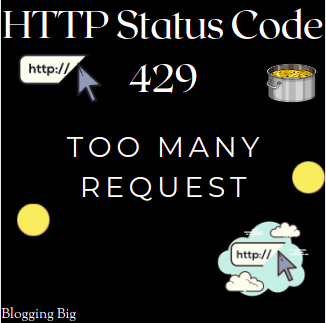Navigation
What is the Status Code 401 Error Code?
HTTP Status Code 401 Unauthorized client error indicates that the request was not processed because the destination resource’s authentication credentials were invalid.
This status is delivered with a WWW-Authenticate header, which includes instructions on how to properly authorize.
This status is identical to 403, except authentication is possible in this situation.
The 401 response indicates that authorization has been denied for those credentials if the request contained authentication credentials. The user agent MAY make a new or updated Authorization header field in the request. If the 401 answer has the same challenge as the previous response and the user agent has previously tried authentication at least once, the user agent should provide the user the enclosed representation, which generally comprises diagnostic information.
Status
401 Unauthorized
Example Response
HTTP/1.1 401 Unauthorized
Date: Fri, 10 sep 2021 07:28:00 GMT
WWW-Authenticate: Basic realm="Access to staging site"Browser Compatibility

Full Support
Server- or Client-Side?
Client error replies are HTTP response status codes that fall into the 4xx category. These messages differ from failures in the 5xx category, which are considered server error replies, such as the 503 Service Unavailable Error we looked at last week. However, the presence of a 4xx error does not always indicate that the problem is with the client, which is the web browser or device used to access the program.
Most client-side code and components, like HTML, cascading style sheets (CSS), client-side JavaScript, and so on, may be ignored if you’re seeking to identify an issue with your own application. This isn’t only true for websites, though. Many smartphone apps that appear to have a modern user experience are really driven by a regular web application that is just concealed from the user.
However, this does not rule out the possibility that the client is at blame for the 401 Unauthorized Error. In many situations, the client will make a request that is missing authentication information, resulting in an unexpected 401 Unauthorized Error.
We’ll go through some of these circumstances (and possible remedies) below, but keep in mind that just because the 401 Unauthorized Error is a client error response doesn’t mean we can rule out the client or the server as the source of the problem. In these cases, the server is still the network object that generates the 401 Unauthorized Error and returns it to the client as an HTTP response code, but it’s possible that the client is the source of the problem.
What Causes a 401 Unauthorized Error?
You’re dealing with a client-side (or browser-side) issue if you get an error code in the 400s. While the problem may appear to be coming from your browser, it doesn’t always imply it’s the source of the problem, as we’ll explain later.
401 errors occur when accessing restricted resources, such as password-protected WordPress sites. As a result, it’s fair to infer that the authentication credentials are the source of the problem.
Outdated Browser Cache and Cookies
One of the most typical causes of a 401 error is that your browser’s cache and cookies have become out of the current, preventing the authorization from being completed correctly. The server will refuse the request if your browser does not use proper authentication credentials (or any at all).
Plugin Incompatibility
This error is occasionally triggered by a plugin incompatibility or problem. A firewall or security plugin, for example, may misinterpret your login attempt as harmful activity and produce a 401 error to protect the website.
Incorrect URL or Outdated Link
It’s also conceivable that the root of the issue is due to a little blunder.
An improperly entered URL or an out-of-date link are common causes in this category.
How to Fix the Status Code 401 Error?
Look for Errors in the URL
Let’s start with the simplest possible solution: double-checking that you used the right URL. Although it may look easy, 401 errors might occur if the URL is incorrectly typed.
Another option is that the URL you used to access the page in question is incorrect. It might, for example, be out of date or link to a page that no longer exists (and no redirects are in place).
As a result, you should double-check the URL you used. Verify that you spelled everything correctly if you wrote it in yourself. If you clicked on a link, double-check that it leads to the page you’re looking for (or try to visit that page directly through the website).
Clear Your Browser’s Cache
The cache in your browser is intended to improve your online experience by decreasing page load times. Unfortunately, it can occasionally produce unwelcome disruptions.
One of the most typical reasons for the 401 error, as previously stated, is obsolete or inaccurate cache data or cookies. If there are no difficulties with the URL of the website, the next step is to delete your browser’s cache.
This will clear any incorrect information from your browser’s local storage, which might be interfering with the authentication process. Similarly, your browser’s cookies may contain authentication data that requires only a refresh.
Flush Your DNS
Flushing your Domain Name Server is another option for resolving the 401 error (DNS). While this is a less common problem, it might be the reason, so it’s worth a go if the previous two remedies don’t work.
To do so with Windows, go to the Start menu and type cmd into the search box. The Command Prompt will open when you press Enter. Copy and paste the command ipconfig/flushdns into the command prompt, then press Enter.
Deactivate Your WordPress Plugins
It’s possible that the issue generating your 401 error has nothing to do with your browser. It’s also conceivable that one or more plugins are at blame if you’re experiencing difficulties accessing your WordPress site.
When certain plugins, particularly security-focused plugins, detect unusual login behavior that might suggest an attack, they display a 401 error. Others may simply be experiencing compatibility difficulties. As a result, it’s a good idea to turn off all of your WordPress plugins and see if it helps.
By navigating to Plugins > Installed Plugins on your dashboard, you may deactivate all of your plugins at once. To choose all of them, check the box at the top. Select Deactivate from the Bulk Actions drop-down menu, then click the Apply button:
After that, verify if refreshing the page that returned the 401 error has fixed the problem. If that’s the case, you may manually enable each plugin one at a time to see which is causing the issue.
Then you have the option of removing the plugin, replacing it with a new one, or contacting the plugin’s creator for help.
401 Code References
Rails HTTP Status Symbol :unauthorized
Go HTTP Status Constant http.StatusUnauthorized
Symfony HTTP Status Constant Response::HTTP_UNAUTHORIZED
Python2 HTTP Status Constant httplib.UNAUTHORIZED
Python3+ HTTP Status Constant http.client.UNAUTHORIZED
Python3.5+ HTTP Status Constant http.HTTPStatus.UNAUTHORIZED
FAQs
How do I fix error code 401?
Following are the ways to fix error code 404:
1. Look for errors in the URL.
2. Clear your browser’s cache.
3. Flush your DNS.
4. Deactivate your WordPress plugins.
Related Post
HTTP Status Code 101-Switching Protocols
HTTP Status Code 205 Reset Content
HTTP Status Code 300-Multiple Choices
HTTP Status Code 204 – No Content
HTTP Status Code 203 – Non-authoritative Information
HTTP Status Code 207 Multi-Status
HTTP Status Code 208 Already Reported
HTTP Status Code 400 Bad Request
Conclusion
I hope this article was able to help you with your doubts and queries related to the HTTP status code 401 Unauthorized. Still, if there are any queries related to this topic, feel free to ask in the comment section, we would be happy to assist you. Thank you.





Kedar Dangal
Making a difference, Adding the sum.